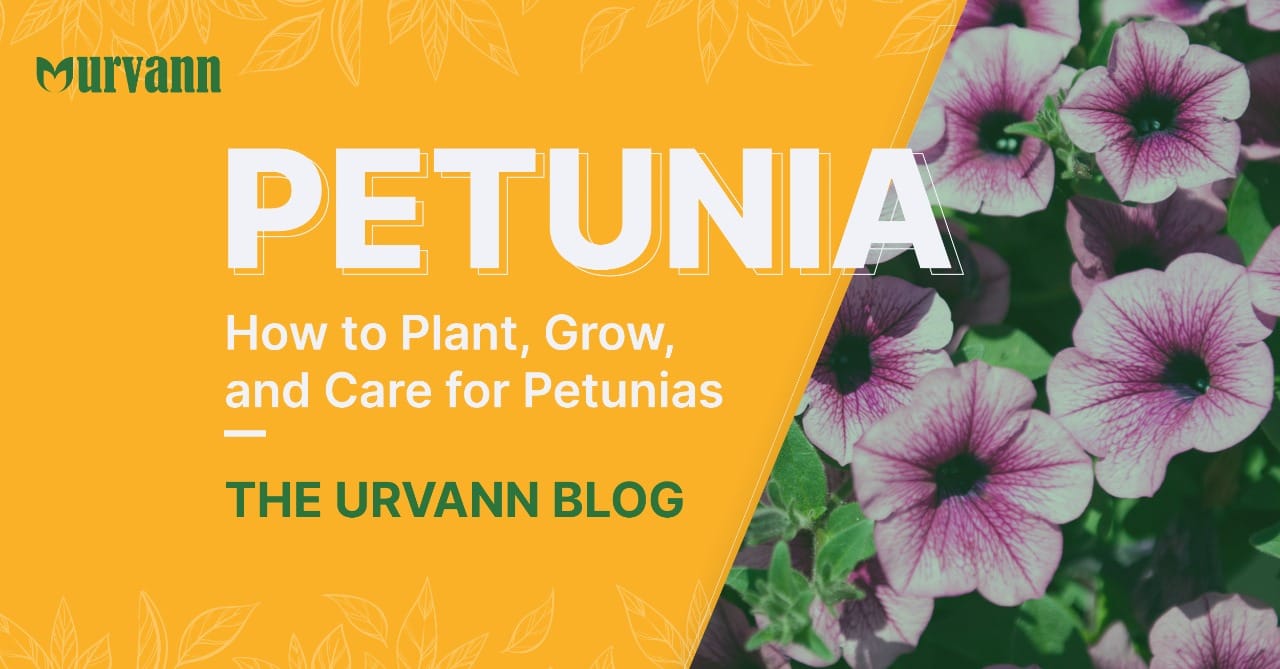Petunias are one of the most colourful flowering plants that you can easily grow at home.
The reason to love petunias is simple. Petunia care is simple, it flowers throughout the winter season, and its colorful blooms can really add pop to a front lawn. They are often used in borders, containers, hanging baskets, or even for covering bare spots in your garden and preventing weeds.
They are some of the most popular winter flowering plants, thanks to their knack for creating a vibrant mass of colourful winter blooms. Here's a detailed guide on how to grow and care for petunias at home.

WATER, SUNLIGHT & SOIL CARE NEEDS OF PETUNIA
WATER- Frequent watering ( possibly every day) is important and is vital for petunias growing in pots and containers. The soil mustn’t be allowed to dry out, but at the other extreme, take care not to over-water, as this can cause spindly growth.
SUNLIGHT- Petunias need as much sunlight as possible. Petunias should be grown outdoors where full sun is available.
SOIL- A rich soil mix (compost, cocopeat, and sand) is preferable while planting petunias in pots
BEST SEASON TO GROW PETUNIAS IN INDIA-Petunias cannot survive extreme heat and rains. In Northern India, they are grown starting October and bloom through the winter months.

PROPAGATION OF PETUNIAS AT HOME
Even though petunias are easy-to-tend annuals, they still require care. You will likely sacrifice flowers when you prune, but you will be rewarded with more flowers in return. Regular prunings help prevent petunias from becoming leggy with long stems and little growth at the tips.
- Use your fingertips to pinch, or use a pair of scissors to cut back, all tips 1 or 2 inches just above leaf sets to encourage branching. Do this at planting time.
- Similarly, once a branch has flowered, pinch it to ensure new branching and flowering
- Always leave a minimum of one or two sets of leaves when cutting back stems.
(How to prune petunias by https://homeguides.sfgate.com/prune-petunias-39853.html)

COMMON PROBLEMS WITH PETUNIAS AND CARE
Hopefully, next time you notice your lovely petunias are dying, you’ll have a few tricks up your sleeve to diagnose and fix the issue.
Wilting and Dying- Underwatering or overwatering can be a potential reason for the plant wilting and dying. Hence, petunias will bloom their best when they are watered properly and planted in well-drained soil.
Insect or Disease pests- Petunias have few serious insect or disease pests, though aphids and slugs can be an issue. Avoid wetting the foliage and flowers when watering to help prevent diseases.
Saggy Flowers-When it comes to sagging, leggy petunias, one of the most prevalent problems is a lack of water reaching the roots. Feel the soil; if it feels dry (nearly like a brick in texture), it's a sign that there's a problem with the water supply.
However, with constant watering and feeding, as well as any further trimming as needed, your petunias should start to recover. It shouldn't be long until they blossom again, bringing with them the brilliant colour that made them so popular in the first place. Your petunias are supposed to add colour and brightness to your house or garden. With a little additional care, even the most battered petunias can be brought back from the brink.
What is your favorite flowering plant? Let us know by commenting below.


